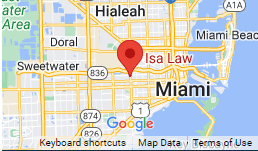The United States remains a magnet for global talent, attracting professionals from around the world who seek employment opportunities and career growth. For foreign workers looking to contribute their skills to the U.S. economy, navigating the complex landscape of work visas is crucial. In this blog post, we’ll delve into the comparison between the H1B visa and other popular work visas, shedding light on the key differences, advantages, and considerations for prospective applicants.
H1B Visa
The H1B visa is one of the most sought-after work visas in the U.S. It allows employers to hire foreign professionals in specialty occupations for a temporary period, typically three years, extendable to six years. The H1B visa caters to a broad range of professions, including technology, engineering, healthcare, finance, and more. Let’s explore how it stacks up against other common work visas.
L-1 Visa: Intracompany Transferees
The L-1 visa is designed for employees of multinational companies seeking to transfer to a U.S. office. There are two types: L-1A for managers and executives, and L-1B for employees with specialized knowledge. While the L-1 visa provides a direct pathway to permanent residency (green card) through the EB-1C category, it’s important to note that it’s not specifically intended for new hires like the H1B visa.
Advantage: Direct green card eligibility, no annual cap.
O-1 Visa: Extraordinary Ability or Achievement
The O-1 visa is for individuals with extraordinary ability or achievement in their respective fields, such as arts, sciences, education, business, or athletics. While the O-1 visa offers flexibility and doesn’t require a job offer, it’s tailored to individuals who have reached the pinnacle of their careers.
Advantage: No annual cap, recognition of outstanding achievements.
TN Visa: Trade NAFTA Professionals
Under the North American Free Trade Agreement (NAFTA), Canadian and Mexican citizens can apply for TN visas, provided they work in one of the listed professions. TN visas are limited to specific occupations, making them suitable for professionals in those fields but less versatile compared to the H1B visa.
Advantage: Quick processing for eligible Canadian and Mexican citizens.
Comparative Analysis
Now, let’s delve into the key points of comparison between the H1B visa and other work visas:
Occupational Eligibility
The H1B visa covers a broader range of specialty occupations, accommodating professionals from various industries. This versatility gives it an edge over visas with narrower eligibility criteria, such as the TN and O-1 visas.
Annual Cap
One of the distinguishing features of the H1B visa is the annual cap on the number of available visas. This cap, while intended to regulate immigration, can lead to a highly competitive process. On the other hand, the L-1, O-1, and TN visas do not have a numerical cap, providing more predictability for applicants.
Duration of Stay
H1B visas can be initially granted for up to three years, with the possibility of extending for an additional three years. This six-year limit ensures that professionals can contribute to their employers’ growth while offering a clear timeline for planning. In contrast, other visas like the L-1 visa have a maximum of five to seven years for L-1A and L-1B respectively.
Pathway to Permanent Residency
While some work visas, like the L-1 visa, offer a direct pathway to permanent residency (green card), the H1B visa requires an additional step. Professionals on H1B visas can pursue a green card through employer-sponsored sponsorship, with several categories available, including EB-2 and EB-3.
Educational and Skill Requirements
H1B visas often require a bachelor’s degree or higher, making them suitable for professionals with advanced education. On the other hand, TN visas may require specific degrees or licenses, while O-1 visas emphasize extraordinary ability or achievements.
Dual Intent
The concept of “dual intent” is essential for those considering permanent residency. The H1B visa allows for dual intent, meaning a visa holder can intend to eventually apply for a green card without jeopardizing their H1B status. Some other visas, such as the J-1 visa, may not permit dual intent.
In the realm of U.S. work visas, the H1B visa shines as a versatile option for foreign professionals seeking employment opportunities in specialty occupations. However, it’s vital to understand that each visa category has its unique advantages and considerations. Depending on your individual circumstances, career goals, and the industry you’re in, you may find the H1B visa to be the ideal choice or opt for an alternative that aligns better with your situation.
As immigration laws are subject to change, it’s recommended to consult with experienced immigration professionals, like those at Isa Law, who can provide personalized guidance and ensure you make the most informed decision on your journey to working and living in the United States.


